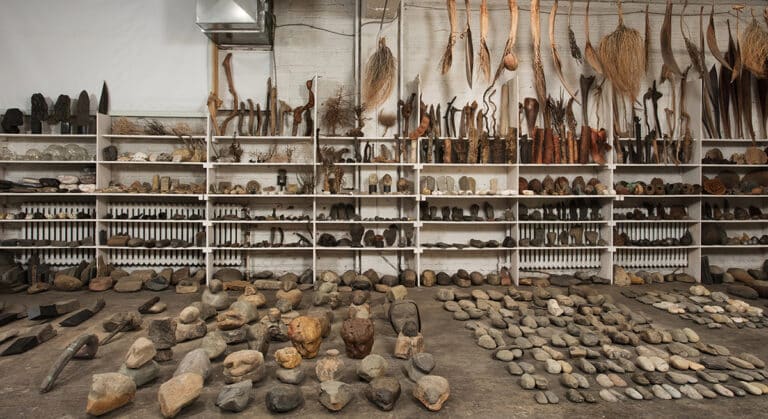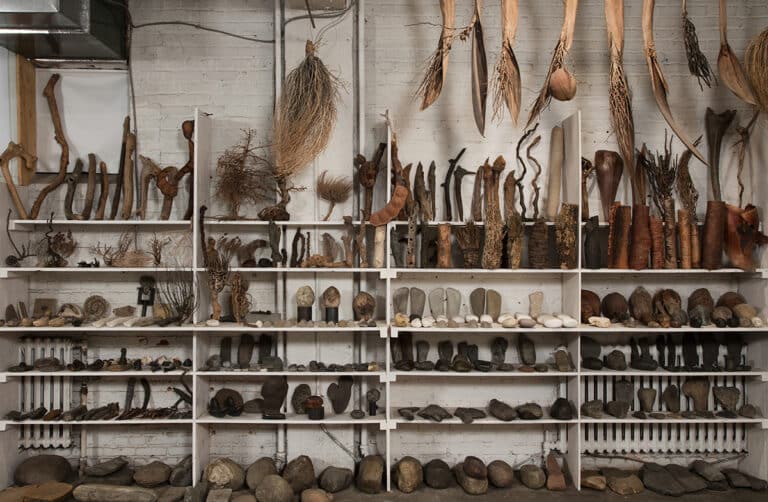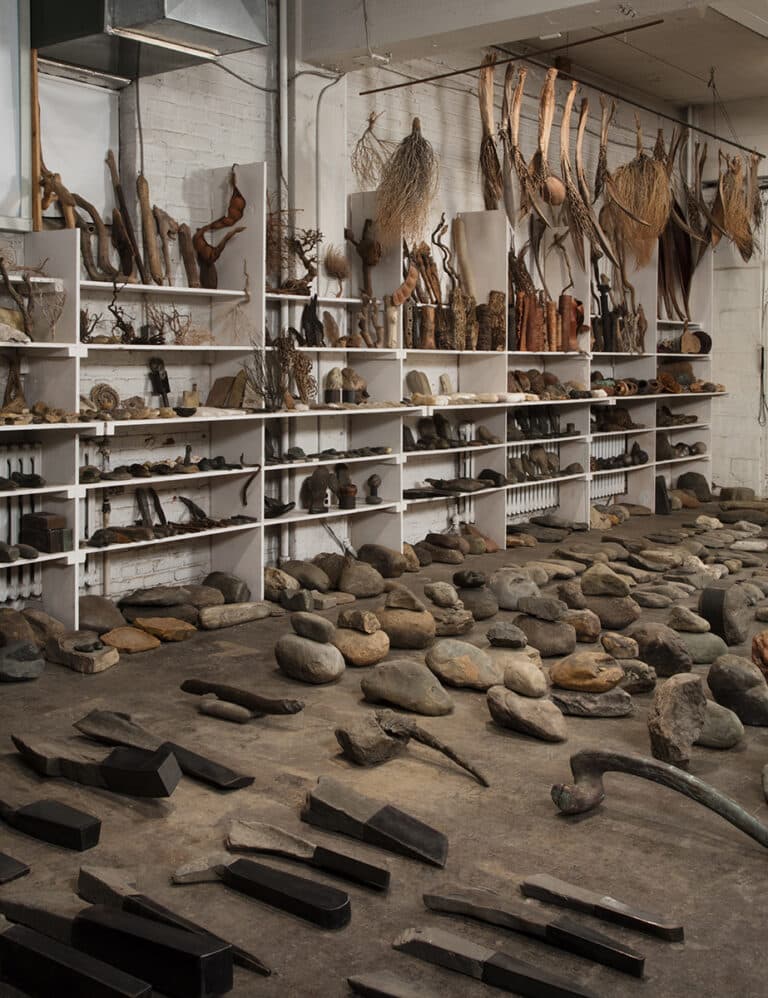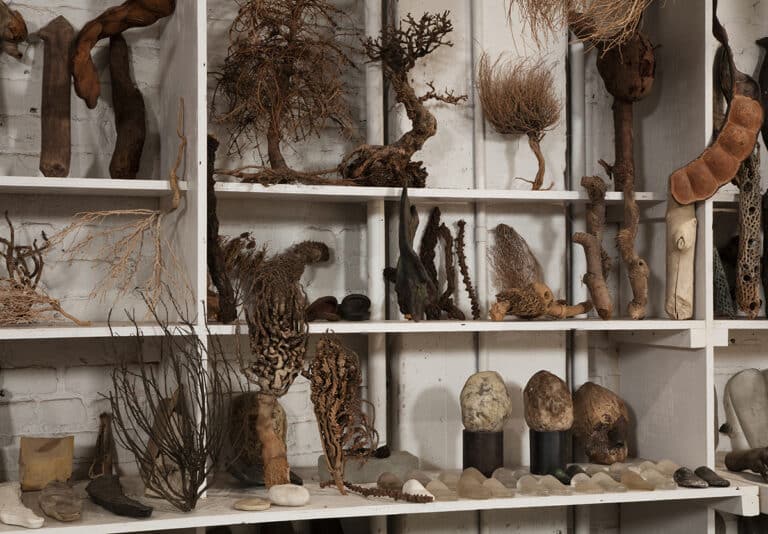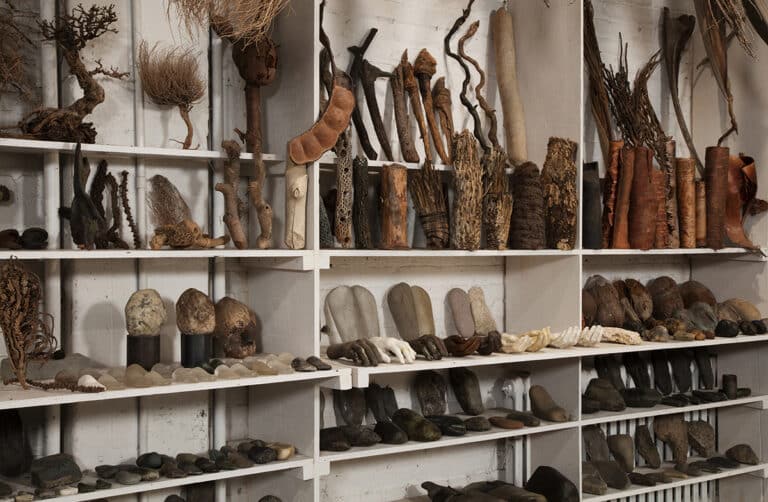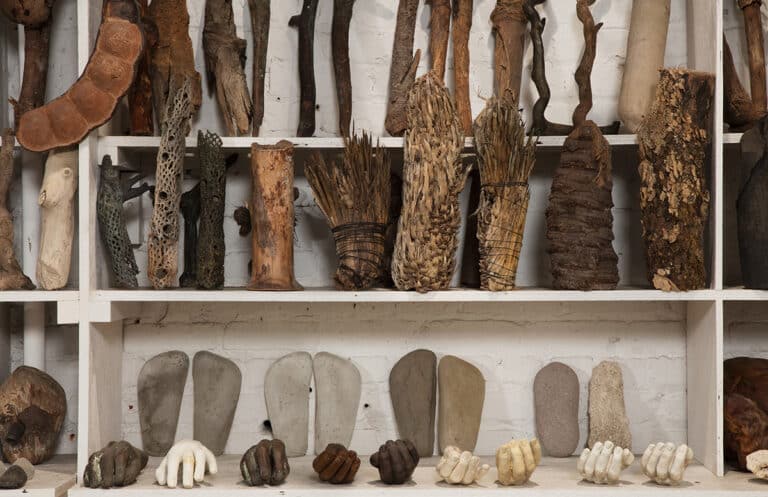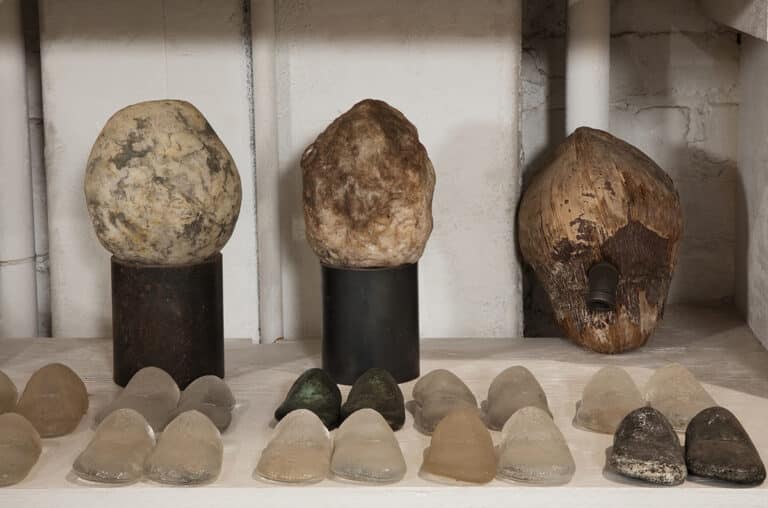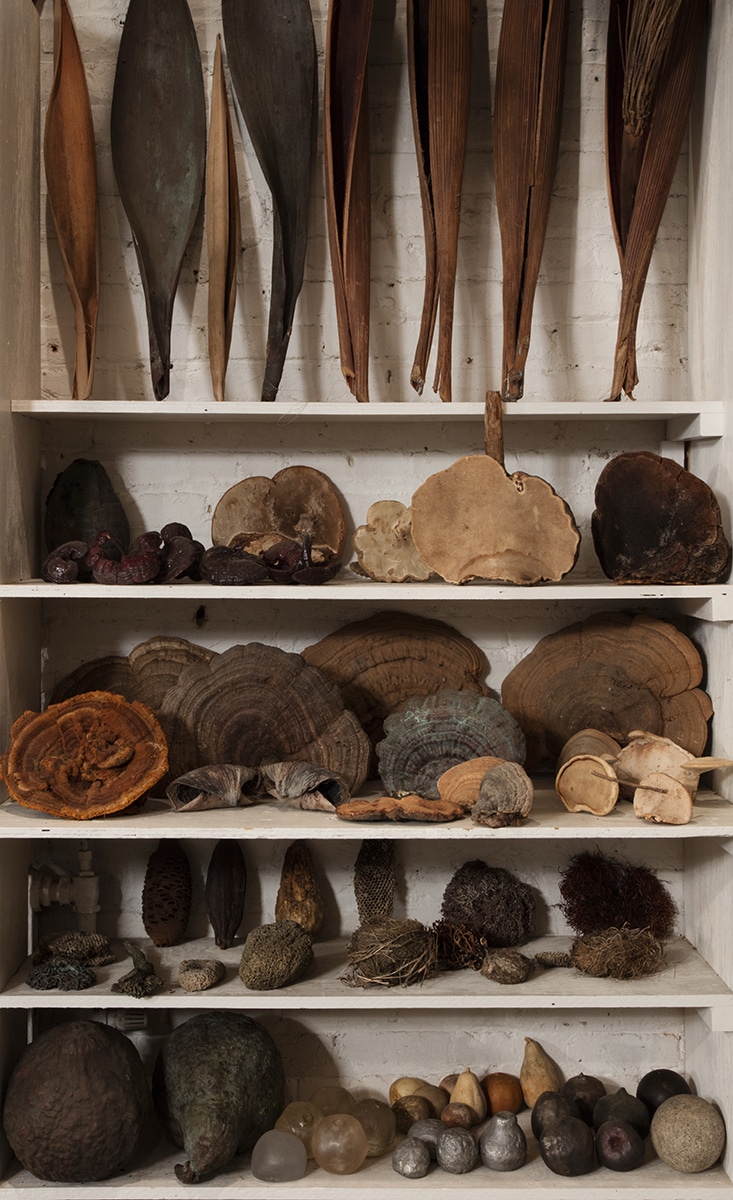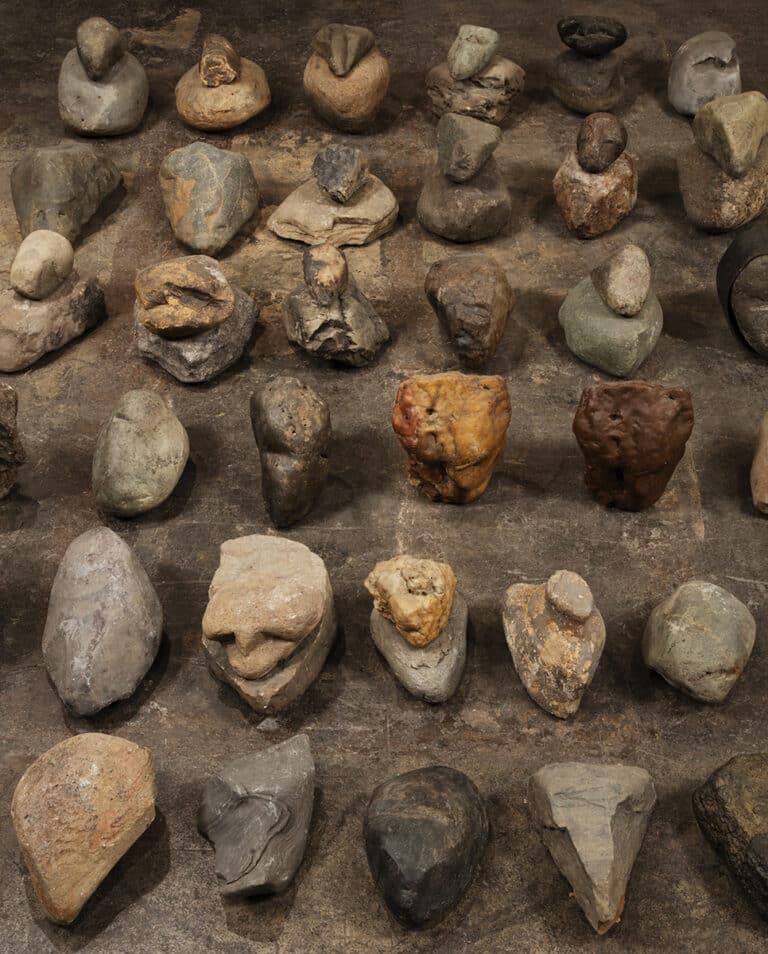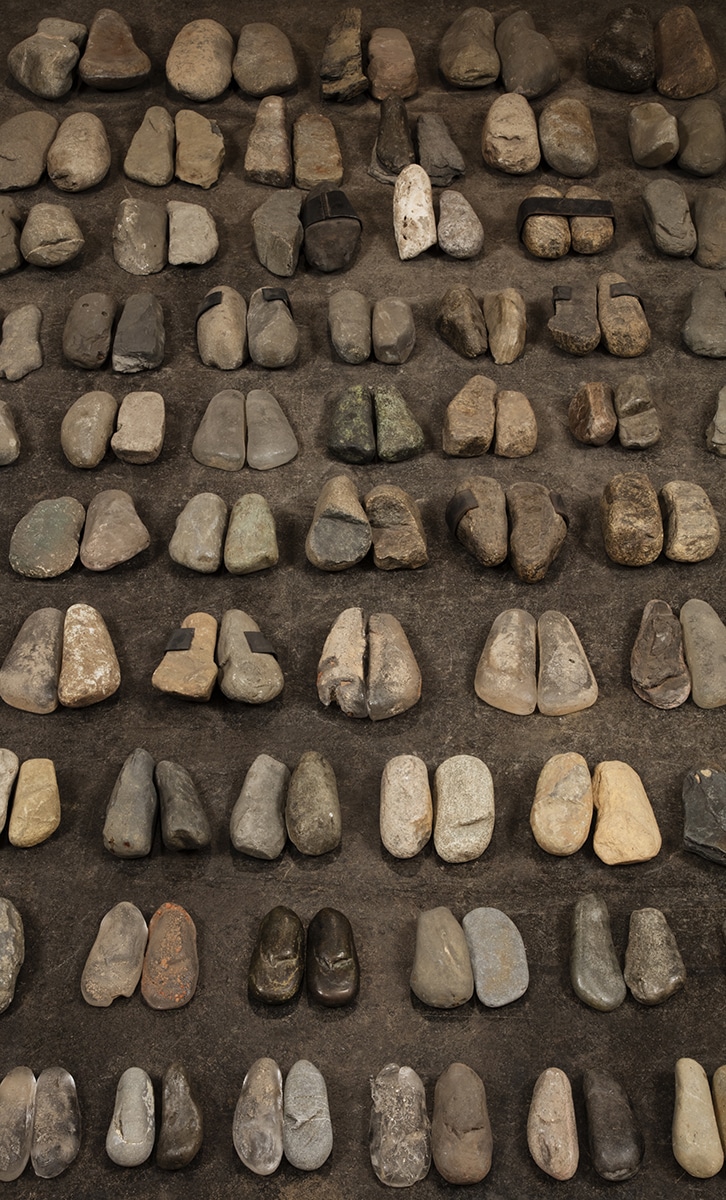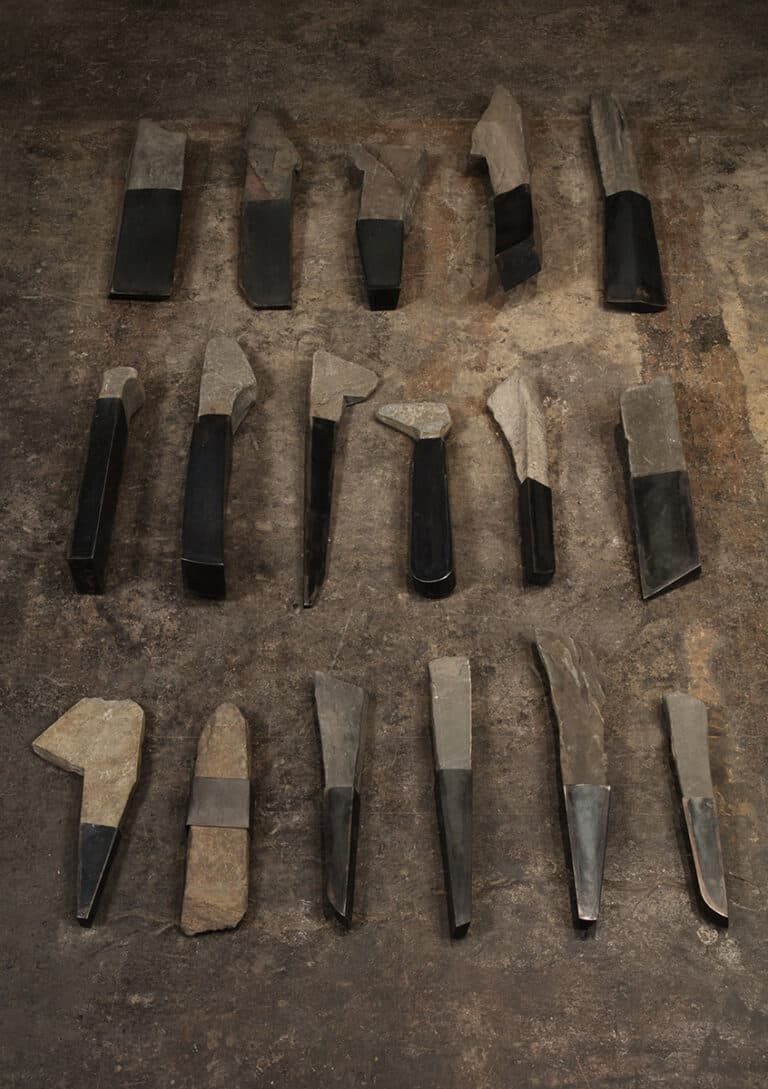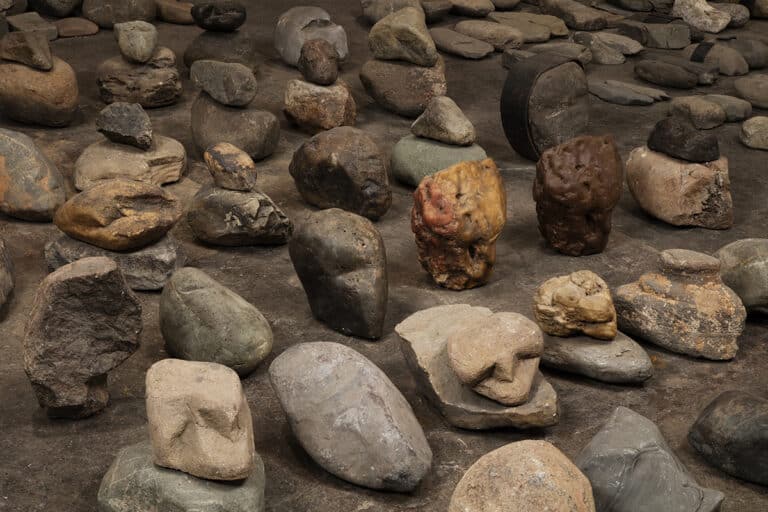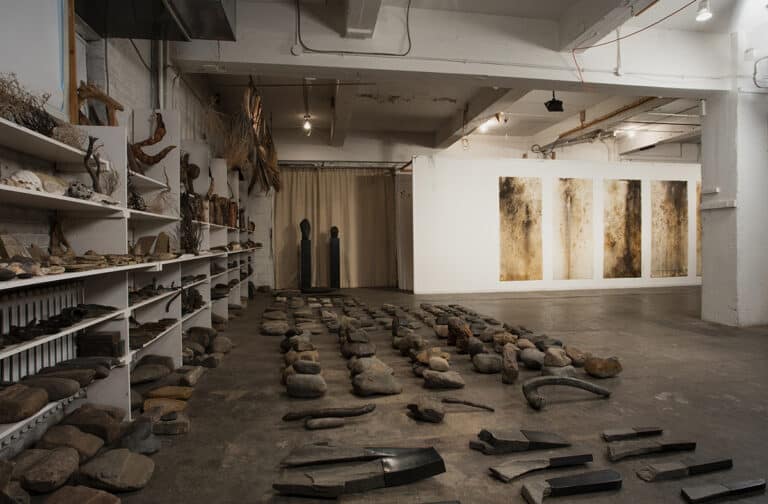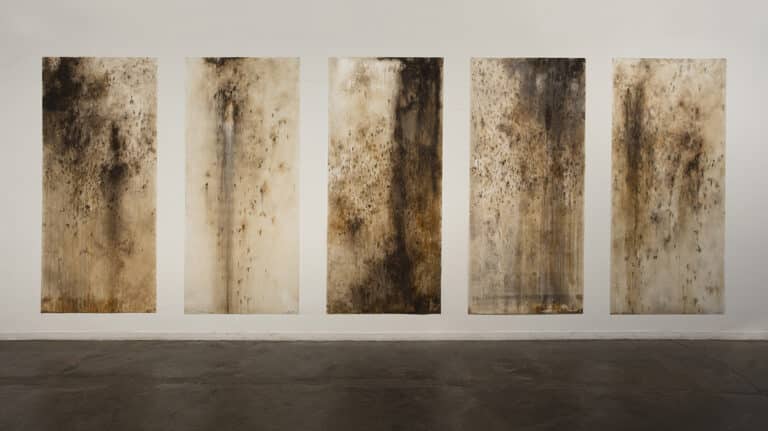Slide Images
1 – Studio Installation
2 - Studio Installation View No. 1
3 - Studio Installation View No. 2
4 - Studio Installation View No. 3
5 - Studio Installation View No. 4
6 – Studio Installation View No. 5
7 - Studio Installation View No. 6
8 - Studio Installation View No. 7
9 - Studio Installation View No. 8 - Heads
10 Studio Installation View No. 9 - Feet
11 - Studio Installation View No. 10 - Steel/Stone
12 - Studio Installation View No. 11 - Heads
13 - Studio Installation View No. 12
14 - Earth Marks Series IV
Studio Installation Views
Installation shots of the studio, photographed in late 2019.
This collection is a result of a lifetime of gathering material, both natural and man-made. It is a collection of forms that stamp their imprints on my imagination.
As a child growing up on Mount Carmel, Haifa, I collected objects from the earth: seeds, pods, stones, bones and so on. I stored these in a small cave near my house and spent hours assembling and reassembling them. Looking back, I now realize that it was my refuge from the world and a place where I held my own communion with nature.
At the age of 11, I moved with my family to Montreal. It was a traumatic experience for me as absence and loss played a major role in my life and work. Looking back I realize that dislocation also leads to relocation, which can be enriching. In my case, it was my need to find my voice that led me to the process of making art. As a child, I turned to nature for comfort and for an escape from the real world; as an adult, having been taken from my place of origin, I turned to nature as a connection to what I had lost. The natural world is a fertile source for metaphor and understanding of the world around me.
The activity of gathering objects from nature has always been at the core of my artistic process. In 1977, I took a trip to the Sinai desert. Wanting to capture my experience there, I took some of the desert's earth and several stones, thus cementing a lifelong process of collecting. My studio then became akin to my cave, and the collections of organic elements have since become the language of my work.
My interest in nature has also led me to reflect on the relationship between nature and culture, leading me to explore the convergence that is a result of the crossing of cultures through history. In each object gathered I discern meaning. At times I endow these objects with symbolic or metamorphic significance, at other times they become transformed: earth becomes pigment, stones and branches become tools, pods become vessels and containers. I am always in the process of devising means of assembling, ordering, categorizing, pairing, labelling and creating situations that transform my inventory into my work. What has become my inventory also draws attention to the concepts of oneness and variety. A fundamental aspect is the attempt to capture meaning for an object both individually and collectively.
“… Sylvia Safdie’s work represents a distillation of reflection: an action of turning, bending or framing the object in order to adumbrate its relationships, both external and internal spatial and temporal within the world. Rainer Maria Rilke has written “our task is to stamp this provisional, perishing earth into ourselves so deeply, so painfully and passionately, that its being may rise again, invisibly in us.” This is the departure point for Sylvia Safdie’s work.”
- Irena Murray, from notes on Sylvia Safdie: The Inventory of Invention, May 1977
